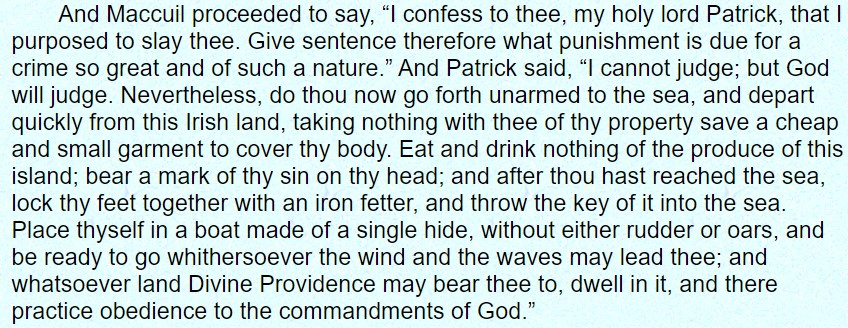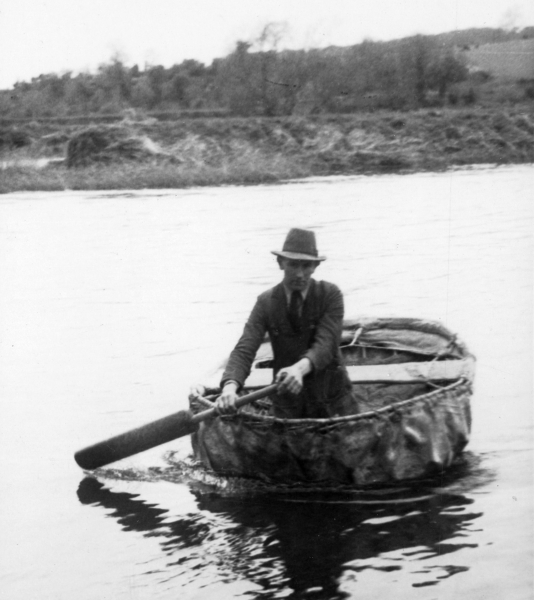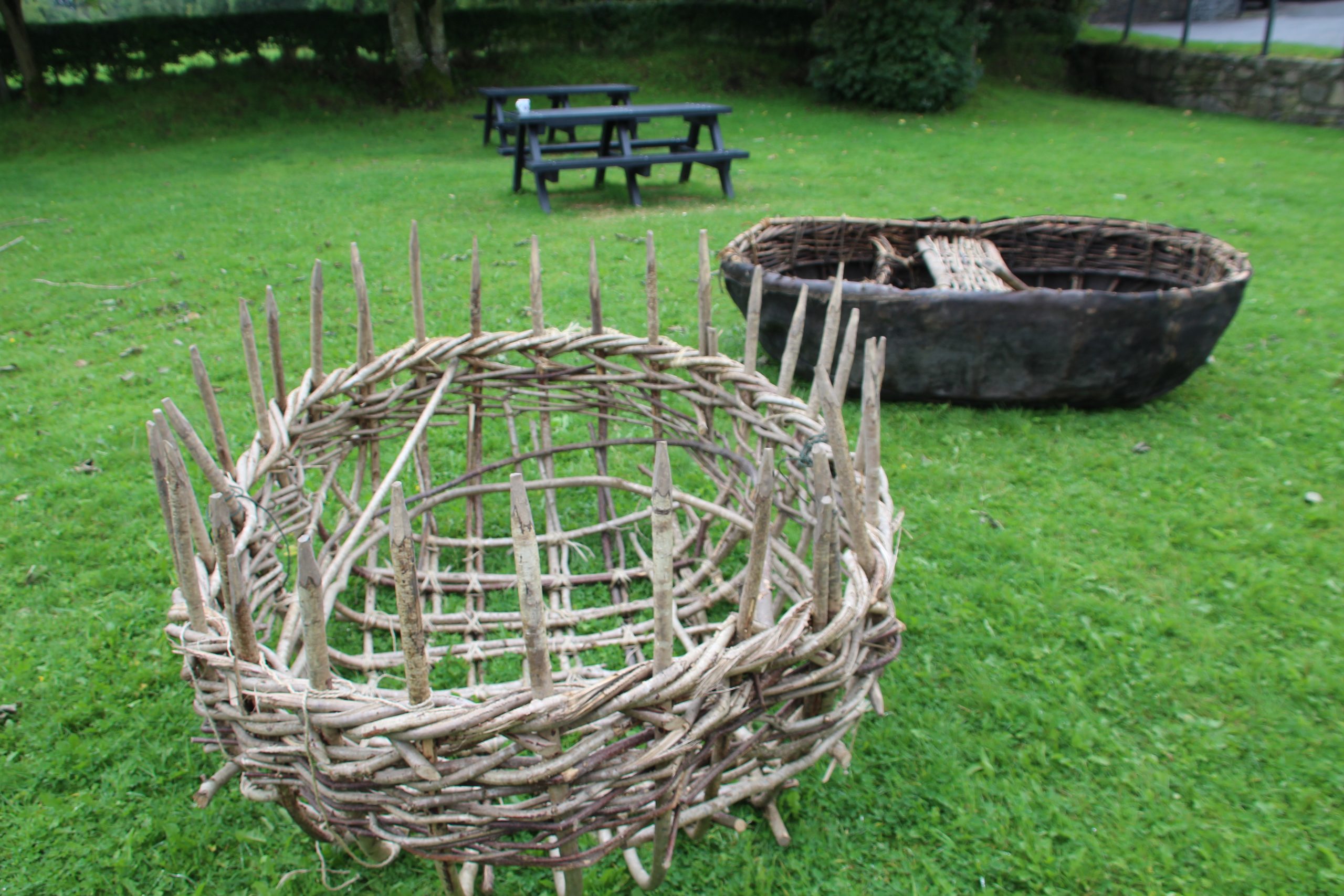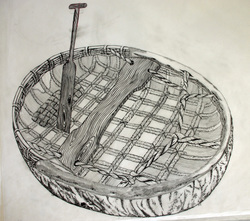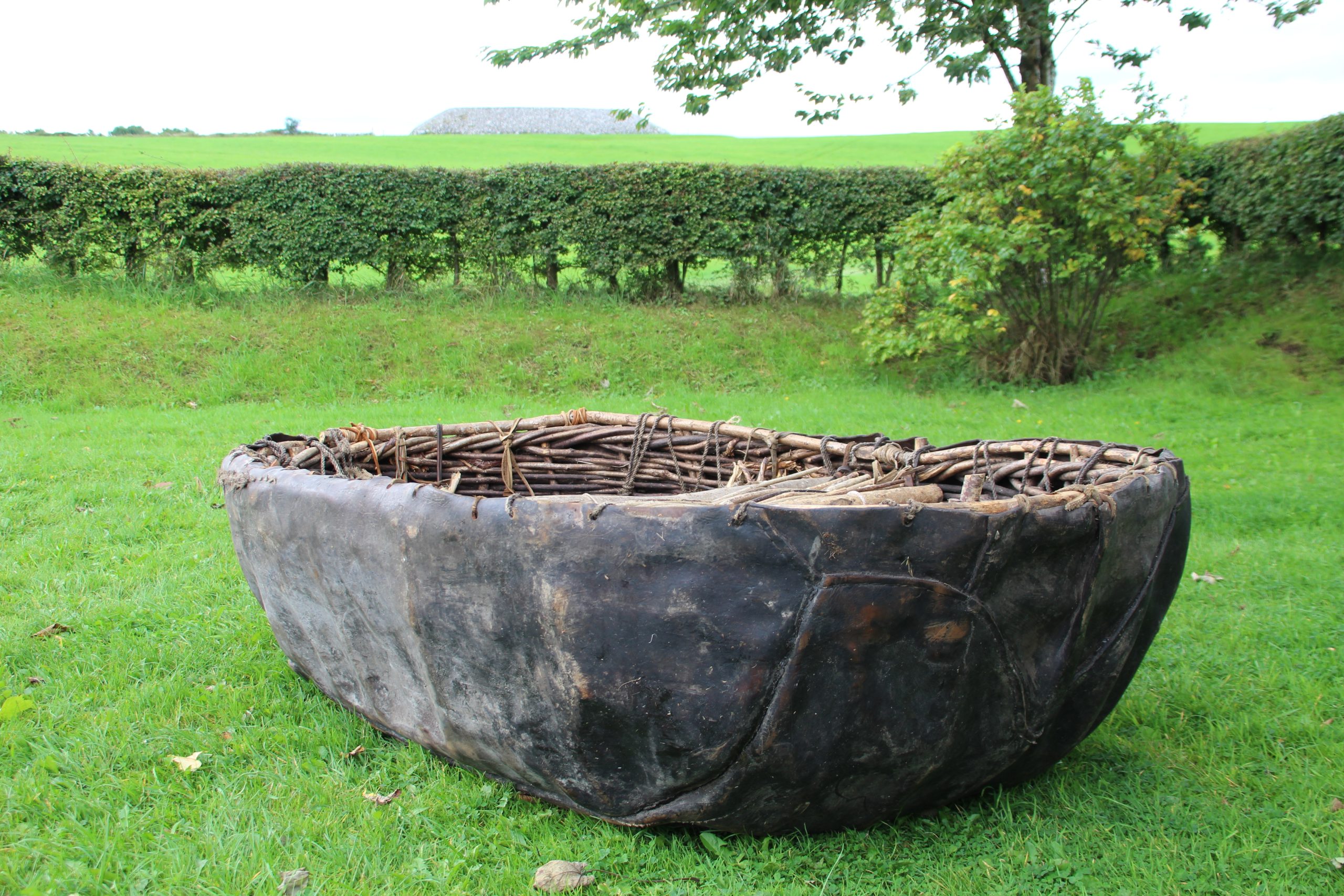Robust Nature
Because of its robust nature, the leather clad currach was always depicted larger than life in an attempt to over state their abilities and importance. The first images of the craft was first drawn for a travel journal in the 1840s during the great famine, but the uses of the boyne currach was first written about in 1366, as it directed flotillas of building material from an inland port down the river to the town of Drogheda alongside the Boyne estuary. Similar recordings of a craft referred to as the ‘courachi‘ or ‘courach‘ in the province of Moray Scotland in 1775, describe how they too direct the floating timber away from the shallows and into deep water by using a rope in one hand and a paddle in the other, he also describes how a passenger may be carried in such a courach by standing upright while holding onto the paddlers shoulders for balance. Other accounts refer to currachs being used to ferry individuals across narrow tidal waters at Poutt – chourich in 1798 by carrying 2 or three people depending on the crafts size. This seems identical to Hornell’s reference to small leather currachs being used to ferry people and goods across the narrows at Omeath rather than travel to the bridge in Newry. Other references refer to the highlander clinging to their language as well as all traditions such as Hector Boece in 1527, describing crafts made of osier and bull skin to ferry over the river or fish for salmon, and when finished carry the craft home on their shoulders. Later translations in the 1820s call the craft a ‘corruck’. But by the 1940s, the Boyne currach was referred to as the tub who took people across the river when a more direct course was needed to go to relatives or to get to the nearest train station.

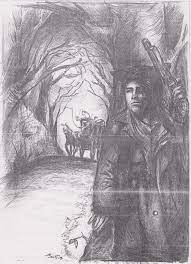
Escape
Another use for the currach was popularised when Red Hugh O’Donnell choose to cross the River Boyne in a currach above the town of Drogheda to avoid detection by the crown forces who were in search of him after his epic escape from Dublin Castle. The O’Malleys had used a similar method to evade the crown forces on the River Shannon and later again, Collier, the highwayman, twice used the Boyne currach to evade the noose while being chased by the royal Dragones who had been specifically summoned to capture Collier after he robbed the stage of the magistrate once too many. On the third occasion after running for miles, the currach had been moved and in the freezing snow he swam to the far end of the estuary, where on entering the old pub, he was revived with mouths of whiskey.
Pilgrim and Penance
There are accounts of the Boyne currachs being used to rescue sheep and also to search for individuals feared drowned in more recent times. But long ago, single skinned currachs, as they are referred to nowadays, were used by individual Anchorite monks as a form of pilgrimage, leaving the shore on an outgoing tide without even a paddle to steer them, relying only on the energy and forces of nature to steer them closer toward eternal life. For others this same journey was handed out as a form of penance for not respecting the rules. An example of this is the penance that was handed down to Maccuil, an ungodly, savage tyrant, who confessed that he was planning to slay St Patrick. He was sent to sea in a one-hide boat, and the elements were to decide his fate.
